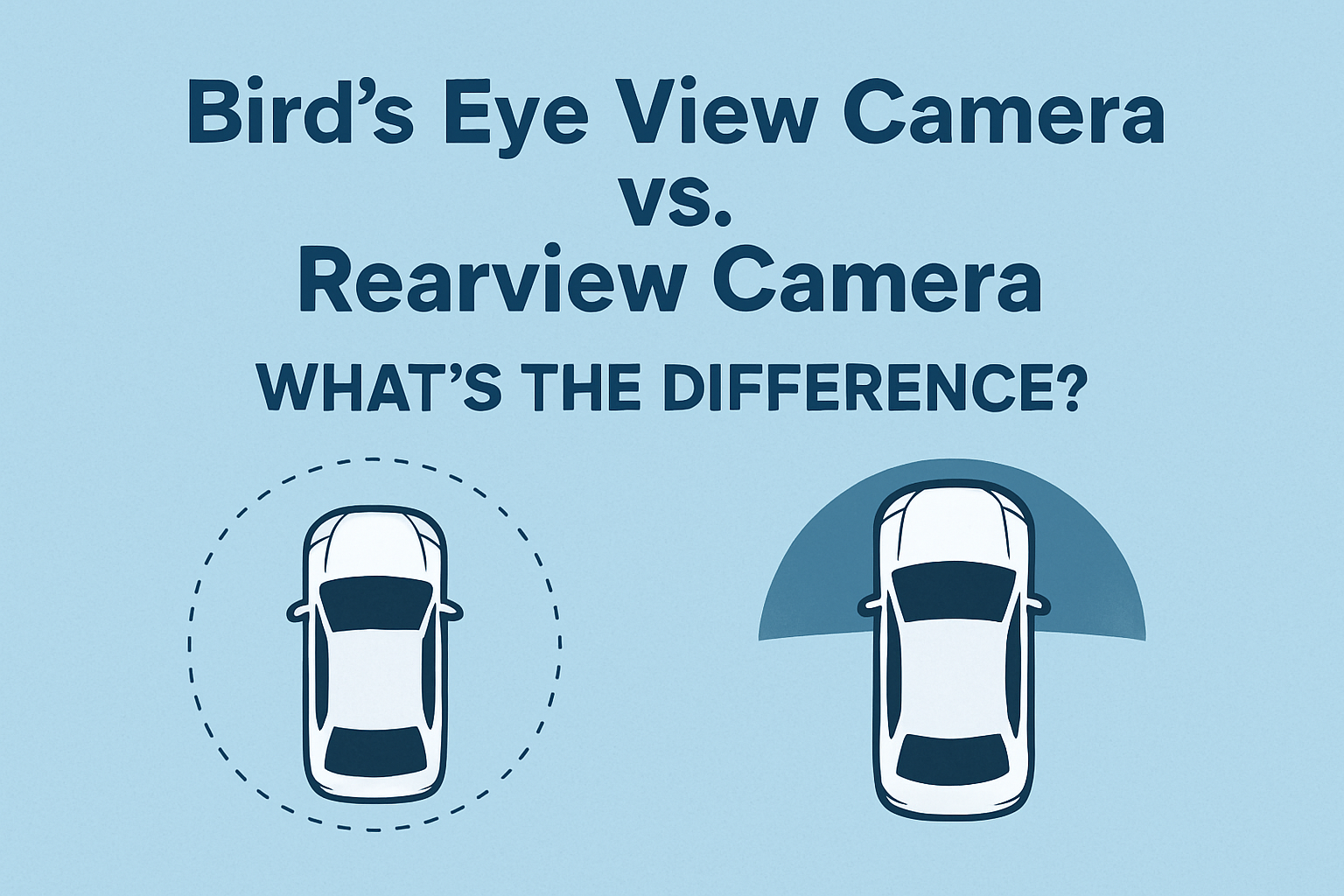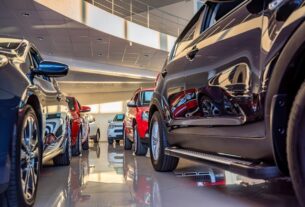A clear view behind the vehicle is more than a necessity in fleet management. It’s crucial for safer maneuvering and preventing accidents like safety issues.
As automotive technology advances, drivers are required to have more than a rearview mirror or a simple backup camera to depend on.
However, understanding which one to choose from, whether it’s a birds eye view car camera or a rear camera for car, requires exploring different perspectives for making informed decisions.
So what exactly makes both different camera solutions different from each other, and do you need both? Let’s explore this in detail.
What Is A Bird’s Eye View Camera?
A birds eye view camera, or a 360-degree or surround view camera system, is an advanced vehicle safety feature to provide a simulated top-down perspective of vehicles and immediate surroundings.
It integrates video feeds from four or more wide-angle cameras mounted on the front bumper, rear tailgate, and side mirrors.
Some of the key benefits it brings include:
- The 360-degree environmental awareness helps in eliminating the blind spot by showing the sides of the vehicle all at once.
- It helps in reducing the risks of collisions with adjacent vehicles, poles, and curbs in confined parking areas.
- The camera system allows for safer low-speed maneuvering, especially in urban environments.
- Improves the confidence of drivers and boosts the operational efficiency of fleet, commercial, or logistics vehicles.
What Exactly Is A Rearview Camera?
A rearview camera is a single camera mounted at the back of a vehicle.
However, the primary function is to provide a live video feed showing what’s behind the vehicle when you are reversing. It helps in avoiding obstacles, whether it’s other vehicles, pedestrians, or other blind spots.
Also, it has become a staple in the U.S., especially since NHTSA ( National Highway Traffic Safety Administration) mandated the backup cameras in all cars from 2018 onwards.
Some of the major key benefits a review camera brings are :
- Improve safety as it eliminates the blind spots behind the vehicle, reducing the risk of collisions during reversing in crowded and low-visibility situations.
- The live feed helps drivers to have easier parking into tight parking spaces to have greater precision, reducing minor scrapes and stress.
- Countries like the U.S. require a backup cameraas it’s a mandatory option on vehicles for enhancing safety.
Understanding The Key Differences Between Bird’s Eye & Rearview Camera
To understand how these systems are different, here is a comparison table to know :
| Features | Rearview Camera | Bird’s Eye View Cameras |
| Number of cameras | 1 ( rear mounted) | 4 or more (including front, rear, and sides) |
| View type | Rear-facing video feed | Composed top-down image stitched using multiple feeds |
| Coverage Area | Shows the area behind the vehicle | Full 360 o premiere visibility |
| Ease of installation | Simple as it requires a single camera setup | Complex as it requires the integration of multiple cameras |
| Primary use | To keep reversing safely | For low-speed maneuvering and parking in tight spaces |
| Vehicle type | Sedans, compact cars, and light-duty vehicles | SUVs, vans, trucks, and commercial fleets |
| Blind spots in visibility | Moderate | High |
| Additional features | Works for basic obstacle detection | Compatible with collision alerts, sensors, and lane assist |
| Affordability | Affordable entry point | It might cost more due to its premium solution |
How To Pick an Optimal Camera Solution For Your Vehicle & Use Case?
Once you understand the meaning and key differences between a rear-view camera and bird’s eye view camera, the next step is to understand which one is suitable for your vehicle. Here is a structured approach to picking the optimal camera solution.
Choosing a rearview camera system can be an ideal pick if :
- Your vehicle primarily operates in environments that are suburban or low-traffic.
- It’s a suitable choice for an economic upgrade to meet the basic safety requirements in the reversing process.
- If you’re looking for a visual assistant, primarily when you are backing out of parking spaces.
- It’s suitable for a budget is a your primary concern.
Choosing a bird-eye view camera can be ideal if :
- The blind spots are more extensive, like delivery vans, box trucks, and trailers.
- Ideally, for managing a commercial operation that follows a strict safety compliance requirement.
- For maintaining a 360-degree visual, including all surroundings for fleet logistics and parking.
- Drive larger vehicles such as vans, SUVs, and trucks.
- If you prefer value, precision, and peace of mind over the cost.
Do You Need Both?
If daily driving involves basic reversing only in spaces like suburbs, a RV backup camera is all you need. It’s reliable, affordable, and adds excellent rear visibility.
However, for a large vehicle working in a dense city and wanting an extra layer of precision while parking, you can choose a bird’s eye view car camera..
You can use both of them together to create a much safer and more controlled experience for your vehicles.
Conclusion
Rear view and bird eye view cameras help in improving visibility, but in different dimensions.
Also, choosing between both isn’t about which is better, but to understand which suits the requirements the best.
To summarize this, if your concern is looking back safely, a rear-view camera is needed. But if you want to see everything around you, this is where you need birds eye view camera.
However, for upgrading your vehicle safety system, we at Rear View Safety offer you the right solution that can be tailored and dependable for fleet protection.
Our team has expertise in helping drivers and commercial fleets to have more convenience and confidence regardless of the environment and vehicle.




